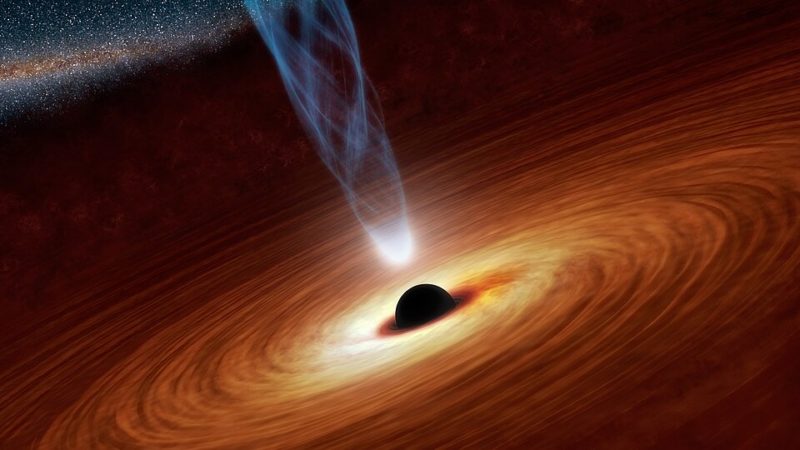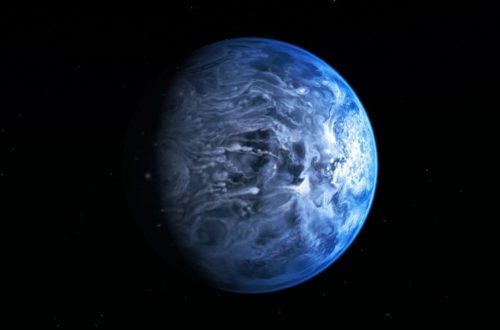Intermediate Black Hole Could Explain Black Hole Evolution

Black holes are one of the most terrifying things in the universe. It shows the real power of gravity, which is usually a relatively weak force when it grows large enough. Eventually, it becomes sufficient to control entire galaxies. But we don’t know as much about black holes as we might like. Much of black hole evolution is still based on mathematical modeling, although we have been able to observe their behavior by watching the things around them.
Black holes are a well-known and now proven phenomenon, but intermediate black holes are a whole different ball game, and for a long time were considered hypothetical, though growing observational evidence now supports their existence. They start out as stellar black holes. These are the smallest ones, and they form when a star collapses in on itself. As the black hole begins to suck material into itself, it grows. If there are any remnants left of the star, those get sucked in first. The gravity increases as the mass of the black hole does, allowing it to draw material in from greater and greater distances.
The process sounds simple and easily explainable. The issue, of course, is proving it. Intermediate black holes are in the process of growing. We’ve seen extra, extra large and extra small black holes, but medium ones are a little trickier. Luckily, we may finally have an answer!
Finding the Right Fit
These medium-sized black holes vary between 100 and several hundred thousand solar masses. That’s a pretty big range, but researchers believe they’ve found one and have published their findings in a 2020 article in Nature. Galaxy M82, which is about 12 million light-years away from Earth in the Ursa Major constellation, appears to have an intermediate black hole.
The measurements they’ve taken put the black hole at around 428 solar masses. That’s a pretty precise measurement to get for a black hole 12 million light-years away. Despite growing interest in them, intermediate black holes have remained very difficult for astronomers to find, let alone measure. They were able to determine the size by watching the black hole.
This probably sounds odd since you can’t see black holes, but astronomers can see what comes out of them. In this case, they can see X-ray photons that shoot out in jets from the center. This isn’t the case with all black holes, but the team got lucky. They were able to measure the appearance of those jets and deduce the rotation of the black hole from it.
The oscillation of the X-ray jets is inversely related to the size of the black hole. The faster the rotation, the smaller the black hole, and vice versa. This has allowed for the one of the most precise indirect measurement of a black hole that scientists have ever achieved.
Growing and Growing and Growing
We think we understand how black holes grow, but there are a lot of missing pieces in the puzzle of black hole evolution. Since we’ve only ever seen the very small and the very big, we guess at all the in-between stages. The main problem astronomers have had is making the math work. If the first black holes formed as a result of a star’s collapse a few hundred million years after the formation of the universe, then they shouldn’t have had enough time to get as big as they are yet.
There are a few theories for how it could have happened. The universe was smaller then, and the matter was more condensed. Because of this, it’s feasible that the black holes could have gone through an early growth spurt, which would contribute to their now gargantuan size. Several theories exist, such as direct-collapse black holes or even primordial black holes, though much remains unconfirmed. Intermediate black holes are an important key to learning about black hole evolution.
There’s still a lot to learn, and the team is prepared to continue their work. Since black holes emit x-rays, we have a way to find at least some of them. NASA’s Neutron Star Interior Composition Explorer (NICER), launched in 2017 and still active as of 2025, is designed to study neutron stars, it can also help locate the x-rays emitted by black holes.
Some of those black holes may be intermediate. Scientists didn’t choose to study M82 by accident. Astronomers already suspected it was the rarest kind of black hole. There are others that they also suspect, and they certainly plan to study them as well. Only studying one isn’t enough. Astronomers need to look at a wide variety of intermediate black holes to start determining their properties and uncovering the mysteries of black hole evolution.
This is the first step. It’s not the last, but it’s a fascinating one!
Would you like to receive similar articles by email?





